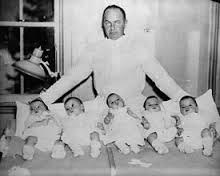
It was a new idea at the time. In the late 1990s, students in college were certainly used to attending classes during which experts lectured them. But perhaps not quite the way I envisioned such a thing. I was interested in having the journalism and broadcasting students I teach at Centennial College meet contemporary media figures, who were highly visible in the profession. One of the first to agree to come to engage my students was quite eager.
“I truly enjoy, and still feel flattered when I’m asked to chair a symposium, referee a debate, or give a speech,” she told me in March 2000.
My guest speaker was Pamela Wallin. She had just completed an autobiography, Since You Asked, and was eager to meet my students to engage them on the topic of “Working in the New World of Media.” She had plenty of experience – first as a radio reporter in her home province of Saskatchewan, her later work at the Toronto Star, then her hosting role on “Canada A.M.” and later her work on CBC Newsworld on her show “Pamela Wallin and Company.”
I’ve been thinking how some of my former students – from 13 years ago – might be reflecting on my choice for guest speaker, a media model to look up to, given the recent accusations levelled at Senator Wallin regarding her travel expenses between Ottawa and her “home” in Saskatchewan. But that’s not the first time Canadians have been let down by those whom we’ve placed on a pedestal and then later watched fall from grace.
Does anybody remember the “Journey for Lives” marathon in 1984?
No, it wasn’t the Terry Fox cross-country run for cancer awareness. But it was very much like it. On March 31 of that year, an 18-year-old man, who like Terry had lost a leg to cancer began a cross-country run to raise funds and awareness of the fight against cancer. Unlike Terry, Stephen Fonyo completed it. He raised $14 million in two months, but took a lot of criticism for his copycat campaign.
Nonetheless, Fonyo’s notoriety skyrocketed. He raised $14 million and then completed a similar run across the United Kingdom. As they did for Pamela Wallin back in Wadena, Sask., they named a street for Steve Fonyo in his hometown of Kingston. He received the Order of Canada. But then he crashed and burned.
Beginning in the mid-1990s, Fonyo suddenly began appearing in Canadian courtrooms – he faced some 16 different charges, including assault with a weapon, writing bad cheques and even impaired driving. Things seemed to go from bad to worse in a troubled marriage and his Order of Canada was revoked; he criticized the government’s removal of the Order saying, “it was given for something previously done.”
But it appears in Canada one-time heroes cannot live off the past. Another classic example, more directly tied to sports was that of Ben Johnson. Of course, in 1988 he captured everybody’s attention for breaking the world record and winning the gold medal in the 100-metre sprint at the Seoul Olympic Games. But within days, his medal was taken away, and his record erased because he was found to have used steroids to achieve the win.
After admitting to his doping regimen at the Dubin Inquiry and several failed comeback attempts, in 2006, Johnson’s handlers unwisely allowed his appearance in advertisements endorsing, “Cheetah” a quick-energy drink.
“Ben, when you run, do you Cheetah?” asks company spokesman Frank D’Angelo in the ad.
“Absolutely,” Johnson replies. “I Cheetah all the time.”
History books, TV retrospectives and grocery-shelf magazines are full of heroes who have fallen from grace. But among the more interesting originally heroic Canadians was Dr. Allan Dafoe. On May 28, 1934, in the small northern Ontario village of Corbeil, Dr. Dafoe delivered five baby girls – Yvonne, Annette, Cécile, Emilie and Marie – to parents Oliva and Elzire Dionne. The resulting celebrity around the family prompted the delivering doctor to create the Dafoe Hospital and Nursery, which put the Dionne quints forever on display. Dafoe became their legal guardian.
Tourists flocked to the nursery (to the delight and profit of Dafoe); between 1936 and 1943 as many as 3 million people visited the nursery. Eventually, the Ontario government got involved when the girls became wards of the Crown. The quints appeared in commercials for syrup products, cereals, condensed milk, toothpaste and disinfectant and generated $51 million for the Ontario tourist industry. In 1998, the sisters reached a monetary settlement with the Ontario government for its and Dafoe’s exploitation of their lives.
“We sincerely hope a lesson will be learned from examining how our lives were forever altered,” wrote Annette, Cécile and Yvonne Dionne.
Heroes come in all forms – senators, track stars and even paediatricians. For them, I guess, the trick is to remember how they became so and to respect the celebrity for a lifetime.